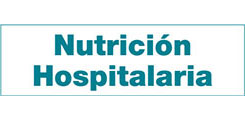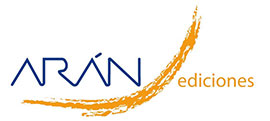Trabajo Original
Can consumption of traditional fermented foods protect against Hashimoto's thyroiditis?
Fatma Özgüç Çömlek, Muslu Kazım Körez
 Número de descargas:
319
Número de descargas:
319
 Número de visitas:
278
Número de visitas:
278
 Citas:
0
Citas:
0
Compártelo:
Background: this study examined fermented food consumption habits and the relationship between other factors and Hashimoto's thyroiditis. Methods: the study included 90 children and their mothers, 45 of whom had HT and 45 of whom did not. Participants answered a survey questioning about their fermented food consumption habits and the status of various environmental factors. Results: mothers who consumed homemade pickles during pregnancy (OR: 0.341, [95 % CI: 0.117 to 0.990]) homemade yogurt (OR: 0.091, [95 % CI: 0.011 to 0.752]), tarhana (OR: 0.325 [95 % CI: 0.136 to 0.778)]) and olive oil (OR: 0.163 [95 % CI: 0.033 to 0.792]) were found to have a statistically significant lower risk of developing Hashimoto's disease in their children. The risk of HT in children who consumed homemade yogurt (OR: 0.091 [95 % CI: 0.011 to 0.752]), cheese (OR: 0.242 [95 % CI: 0.100 to 0.590]), and olive oil (OR: 0.042 [95 % CI: 0.002 to 0.750]) was found to be significantly lower than in children who did not consume it. Conclusions: fermented food consumption habits can be protective against autoimmune diseases such as HT by affecting the immune system through the intestinal microbiota.
Palabras Clave: Fermented foods. Hashimoto thyroiditis. Probiotics. Yogurt. Tobacco smoking.
DOI: 10.1056/NEJM199607113350206
DOI: 10.1097/BOR.0b013e3280113d1a
DOI: 10.1016/j.jaut.2009.09.001
DOI: 10.1038/nrrheum.2011.121
DOI: 10.1038/nri2515
DOI: 10.1016/j.copbio.2016.11.010
DOI: 10.3390/foods10112639
DOI: 10.1016/j.psychres.2015.04.023
DOI: 10.3748/wjg.v20.i43.16095
DOI: 10.1111/pai.13045
DOI: 10.1007/s11154-018-9467-y
DOI: 10.1196/annals.1423.069
DOI: 10.1093/ajcn/72.6.1474
DOI: 10.1016/j.jaci.2012.02.043
DOI: 10.1210/edrv-15-6-788
DOI: 10.1111/all.12700
DOI: 10.1111/aji.12778
DOI: 10.5603/EP.2014.0008
DOI: 10.1177/1352458511418027
DOI: 10.1111/ane.12431
DOI: 10.1007/s10123-019-00057-5
DOI: 10.1111/all.14177
DOI: 10.1212/WNL.0000000000013045
DOI: 10.1007/s10865-018-9911-1
Artículos Relacionados:
Artículo Especial: Aspectos dietoterapéuticos en situaciones especiales del paciente oncológico. prebióticos y probióticos, ¿tienen cabida en la terapia nutricional del paciente oncológico?
Mª José Sendrós Madroño
Trabajo Original: Prevalencia de factores de riesgo comportamentales modificables asociados a enfermedades no transmisibles en estudiantes universitarios latinoamericanos: una revisión sistemática
Luis Gabriel Rangel Caballero , Edna Magaly Gamboa Delgado , Alba Liliana Murillo López
Trabajo Original: Más allá del valor nutricional del yogur: ¿un indicador de la calidad de la dieta?
Nancy Babio , Guillermo Mena Sánchez , Jordi Salas-salvadó
Trabajo Original: Papel de los prebióticos y los probióticos en la funcionalidad de la microbiota del paciente con nutrición enteral
María Dolores Ballesteros Pomar , Elena González Arnaiz
Trabajo Original: El yogur y recomendaciones dietéticas en la intolerancia a la lactosa
Rebeca Saborido , Rosaura Leis Trabazo
Trabajo Original: Papel del yogur en el desayuno de los niños
Ana M. López-Sobaler , Esther Cuadrado Soto , María Dolores Salas-González , África Peral-Suárez , Ana Isabel Jiménez-Ortega , Rosa M. Ortega
Trabajo Original: Satisfacción con el menú hospitalario e incorporación del yogur líquido de cabra como postre
José Abuín Fernández , Ángel Manuel Caracuel García , Ignacio Ruiz García , Ana Gómez-Perea , Lourdes Oliva , Victoria Contreras Bolívar , María Isabel Liébana Barranco , Silvia Jiménez Martínez , Sergio Pérez Ortiz , Gabriel Olveira
Trabajo Original: Nutrición y microbiota en población pediátrica. Implicaciones sanitarias
Ana Isabel Jiménez-Ortega , Rosa María Martínez García , Marta Velasco Rodríguez-Belvis , Ana Belén Martínez Zazo , María Dolores Salas-González , Esther Cuadrado-Soto
Trabajo Original: Simbiosis en el tracto gastrointestinal humano
Francisco Guarner
Trabajo Original: Etiquetado nutricional y perfil de aminoácidos en lácteos chilenos altos en proteína: nueva alternativa para la salud y el deporte
José Gómez-López , Matías Monsalves-Álvarez
Revisión: Revising concepts of artificial nutrition in contemporary surgery: from energy and nitrogen to immuno-metabolic support
Trabajo Original: A mixture of Lactobacillus plantarum CECT 7315 and CECT 7316 enhances systemic immunity in elderly subjects. A dose-response, double-blind, placebo-controlled, randomized pilot trial
Revisión: Evidence on the benefits of probiotics for preterm infants
Ana Maria Campos Martinez , Carmen Elizabeth Fernández Marín , Aida Ruiz López , Isabel Cubero Millán , José Uberos Fernández
Revisión: The effect of probiotics on the serum lipid levels in non-obese healthy adults with hyperlipidemia: A systematic review and meta-analysis of randomized controlled trials
Kaiwen Sun , Zhenzhu Liu , Hongyan Wang
Trabajo Original: Is there a relationship between oral hygiene and nutritional status in peritoneal dialysis patients?
Sonia López-Cisneros , Ailema González-Ortiz , Samuel Ramos-Acevedo , Ángeles Espinosa-Cuevas
Revisión: Effect of the use of probiotics in the treatment of children with atopic dermatitis; a literature review
Artículo Especial: Third Jesús Culebras Lecture - Molecular Biology and Clinical Nutrition; where do we stand and where do we go?
Artículo Especial: Probióticos en las enfermedades hepáticas
Artículo Especial: Aplicaciones clínicas del empleo de probióticos en pediatría
Revisión: Intestinal microbiota; relevance to obesity and modulation by prebiotics and probiotics
Revisión: Lactobacillus Paracasei subsp. Paracasei F19; a farmacogenomic and clinical update
Trabajo Original: Evidencia científica sobre el papel del yogur y otras leches fermentadas en la alimentación saludable de la población española
Trabajo Original: Probióticos y enterocolitis necrotizante del prematuro; to NEC or not to NEC?, ésta es la pregunta
Trabajo Original: Effect of probiotics on human blood urea levels in patients with chronic renal failure
Trabajo Original: Nueva guía de práctica clínica sobre nutrición enteral del recién nacido de muy bajo peso al nacimiento; segunda parte
Trabajo Original: The effect of Saccharomyces boulardii in patients eligible for liver transplantation
Revisión: Alimentación funcional para aliviar desórdenes gastrointestinales asociados a trastornos del espectro autista: Una revisión sistemática
Julián Herrera Mejía , Arnulfo Ramos-Jiménez , Florinda Jiménez Vega , Rocío Campos Vega , Aaron F. González Córdova , Abraham Wall-Medrano
Revisión: Probiotics in the treatment of infantile colic: a meta-analysis of randomized controlled trials
YanPing Liu , Dejian Ma , XiYan Wang , YunZhi Fang
Revisión: Treating asthma patients with probiotics: a systematic review and meta-analysis
Qiwei Xie , Jiatian Yuan , Yaoweng Wang
Trabajo Original: Factores asociados al desarrollo de malnutrición por exceso en niños
Carolina Santibáñez Cárcamo , Rodrigo Silva Gómez
Trabajo Original: Production of snack bar enriched with paraprobiotics grown in banana peel medium, nutritional, sensory and quality parameters
Merve Tokpunar , K. Esen Karaca Çelik , Murat Baş , Hakan Kuleaşan , Aylin Korkut Altıntaş
Trabajo Original: A randomized double-blind controlled clinical trial demonstrating efficacy of different probiotic strains on serum lipids and glycemic biomarker
Gözde Okburan , Murat Baş , Sultan Ogmen
Trabajo Original: Effects of a functional yogurt enriched with soluble dietary fiber or vegetable proteins on appetite profile. An acute randomized controlled clinical trial
Denisse Chu Montiel , Samara Palma Milla , Bricia López-Plaza , Marlhyn Valero Pérez , Carmen Gómez Candela , Laura M. Bermejo
Revisión: El yogur como alimento fermentado de consumo diario saludable y sostenible. Recomendaciones a la población
Rosa M. Ortega , Ana Isabel Jiménez-Ortega , Viviana Loria-Kohen , Aránzazu Aparicio , María del Carmen Lozano-Estevan , Ana M. López-Sobaler
Trabajo Original: Effects of probiotic supplementation on blood lipids ın hypercholesterolemic obese patients: a randomized, double-blind, placebo-controlled pilot trial
Sibel Bulut , Seray Kabaran
Artículos más populares
Artículo Especial: VII Lección Jesús Culebras. Respuesta inflamatoria sistémica y disfunción/ fracaso multiorgánico tras una agresión: implicaciones metabólicas
Ante cualquier agresión, el organismo pone en marc...
Artículo Especial: VIII Lección Jesús Culebras. Medicina intensiva, nutrición e hiperglucemia: una relación muy estrecha
El paciente crítico presenta una respuesta metaból...
-
Licencia creative commons: Open Access bajo la licencia Creative Commons 4.0 CC BY-NC-SA
https://creativecommons.org/licenses/by-nc-sa/4.0/legalcode




